Affiliate links on Android Authority may earn us a commission. Learn more.
How to use your fitness tracker to actually get fit - a comprehensive guide
But these are not just fancy toys for gadget lovers. Rather, fitness trackers are tools with a specific purpose: to help you improve your health and fitness. If you’re just passively wearing your Fitbit, your Garmin, your TomTom or your Jawbone without actually engaging with the data, then you’re missing out on the amazing benefits they can offer. Collecting this data is not just a cool gimmick – it is an opportunity to genuinely improve the way you look and feel and to succeed where previous weight loss attempts might have failed.
In this post then, I’ll be aiming to demystify the world of health tracking and help you get the most from your wrist-worn gadget. Hopefully, you’ll see that these little devices really can help you to get toned abs and a healthier glow and to remove the guess-work from your fitness goals.
How to choose the right fitness tracker for you
If you don’t already own a fitness tracker, then you’ll be pleased to find that there is no shortage of choice for Android users. We’ve covered the best fitness trackers in terms of features and value for money already but let’s dive a little deeper and assess what we’re actually looking for when selecting a device to get us lean.
In terms of features, the key things to look for are:
- Heart rate monitor
- Pedometer
- Gyroscope/accelerometer
- Sleep tracking
- GPS
- Barometer
At a minimum, these features will give you a well-rounded picture of your health. Also useful but less crucial are:
- Automatic activity detection
- Water resistance
- Long battery life
- Guided workouts
- External heart rate monitor support
- 3rd party app support
The Garmin vivoactive HR is a great choice, as is the Vivosmart HR+, the Microsoft Band 2 and the Fitbit Surge – just to name a few of my own personal favorites.
Of course everyone is different and everyone has different goals. This is fortunate seeing as right now there is no single fitness tracker that ticks every box (I am waiting for that device with bated breath). The key is to look at your own requirements and to find the offering that comes closest to meeting all of them.
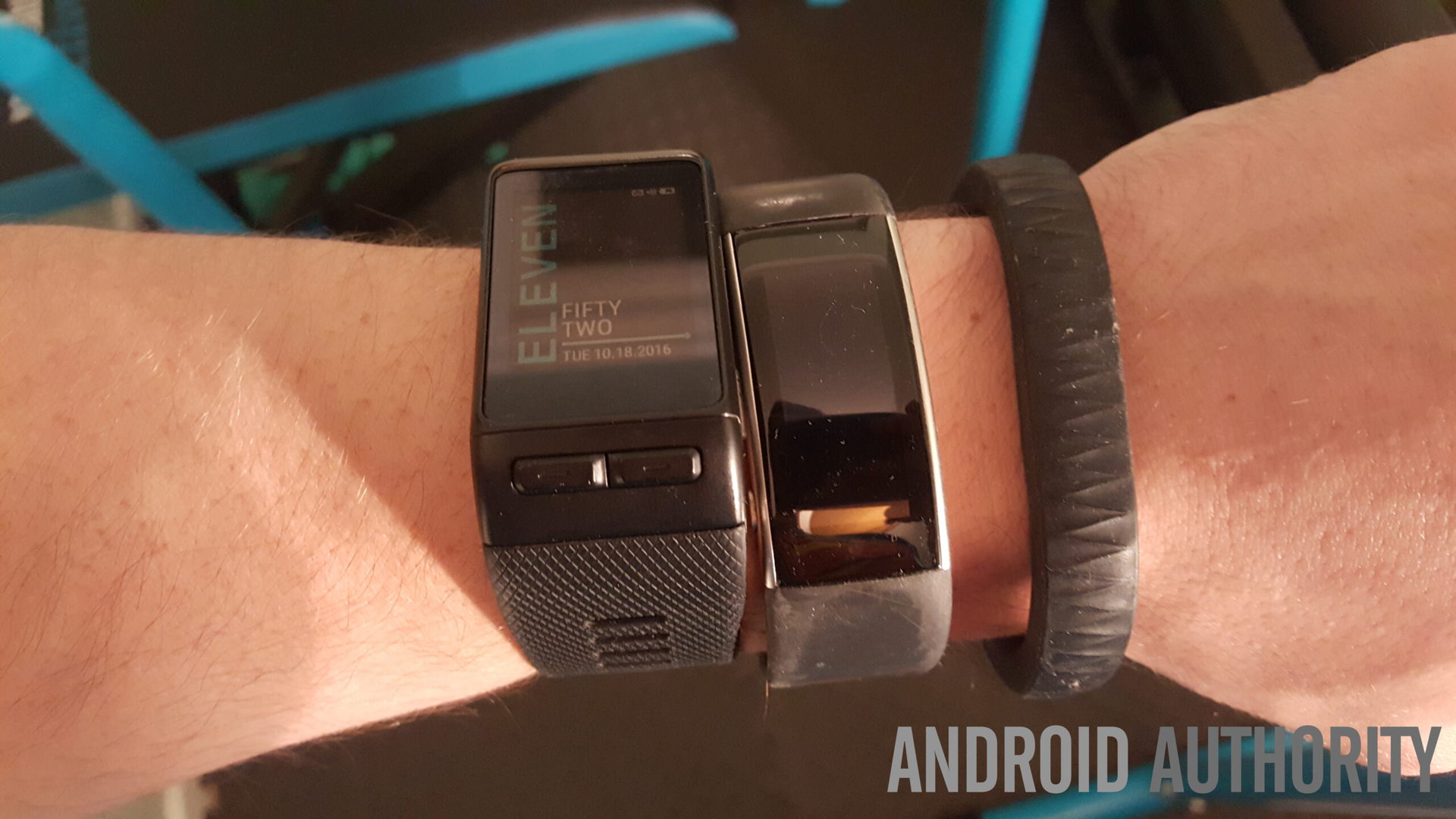
And don’t forget to look at factors that might impact on usability. If you’re intending on wearing your fitness tracker 24/7, then it needs to be comfortable and it needs a good battery life. It needs to look good and it needs to not leave angry red marks on your skin. If you travel a lot or run marathons, then you also need a fitness tracker that has a long battery life. If you want more data displayed during workouts, you might want a bigger screen. If you are a swimmer, then you’ll need something that is not just waterproof but also takes heart rate readings while swimming (some barometers are also negatively affected by swimming).
The key is to look at your own requirements and to find the offering that comes closest to meeting all of them.
The key is to look at your own requirements and to find the offering that comes closest to meeting all of them.
Be thorough when reading reviews and compare lots of reports to make sure that you’re getting something that can fit seamlessly into your lifestyle. Take a look at the accompanying apps for each ecosystem and see whether you find them intuitive to understand and navigate. Check for quality control issues (*cough* Microsoft *cough*) and syncing issues.
Over the rest of this article, you’ll see how each of these features comes into play and hopefully this will give you a better idea of what you’ll need to reach your specific goals.
Nuances in heart rate monitoring
Of all the features, perhaps the one to pay closest attention to is the heart rate monitor. Not all heart rate monitors are made equal and this is something to keep very much in mind when selecting your weapon of choice.
Wrist-worn heart rate monitors normally rely on optical sensors that work using an infrared light to observe your blood vessels through your skin. From there, they can deploy a technique called ‘pulse oximetry’ in order to look for changes in the appearance of the blood, indicating levels of oxygenation. Each beat of your heart should alter this oxygenation and thus the frequency of these slight changes can be used to take a pulse.
Unfortunately, this technique brings various challenges with it however. One problem is that this isn’t quite an exact science and various things can interfere with these readings. One example is muscle contraction which also impacts on oxygenation; so if you’re lifting weights, then contracting your bicep can actually interfere with readings. The best wrist-worn heart rate monitors will counteract this by using algorithms that look at other things like your arm movements in order to compensate for these changes. For example, if you appear to be performing curls then the software can try to second guess what impact this may have on your heart rate reading and adjust accordingly.
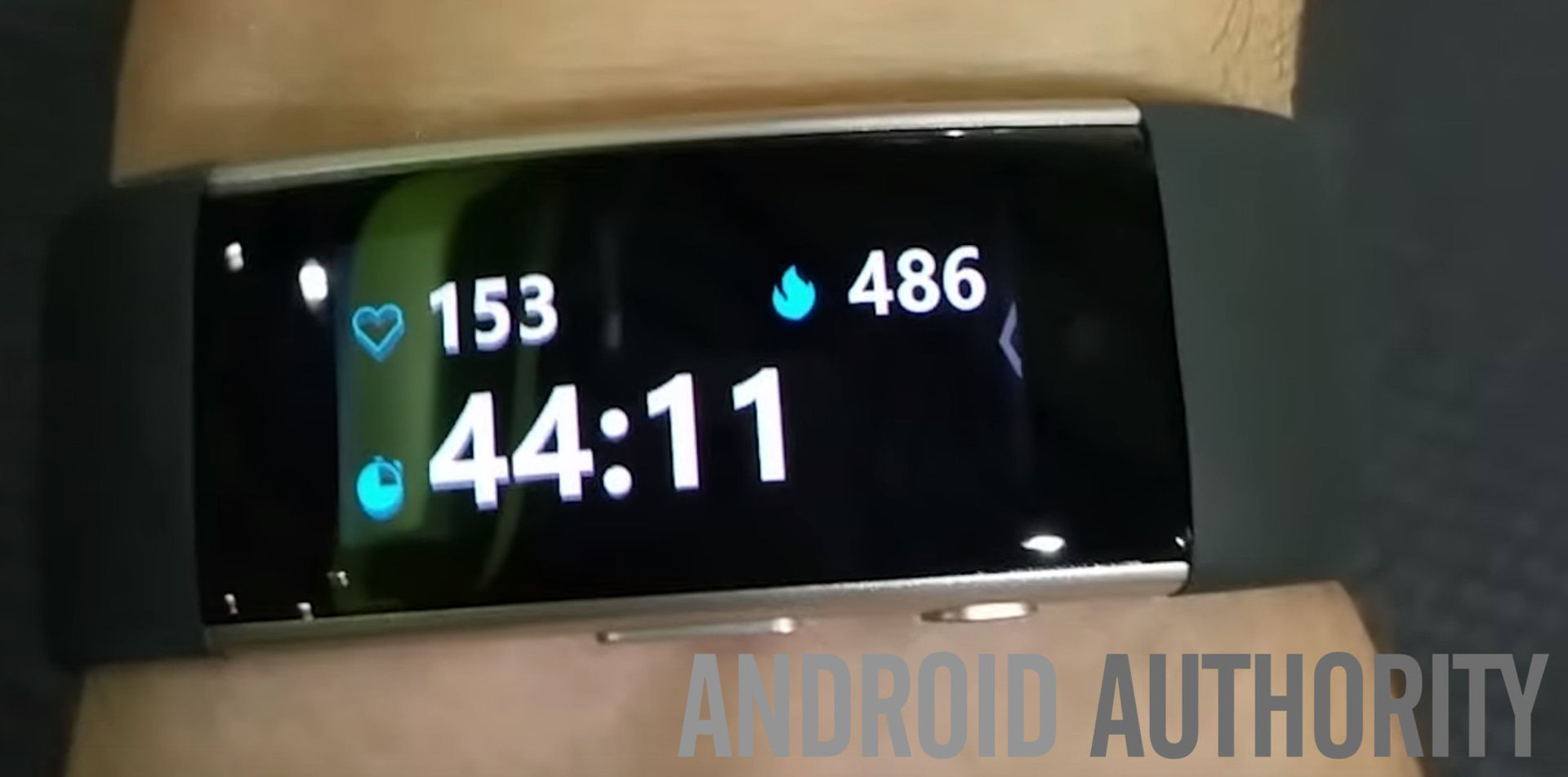
This is a serious issue with other devices, however. As Joshua pointed out in his review, the Gear Fit 2 will actually turn the heart rate monitor off during weightlifting. Other devices can take a little while for the heart rate monitor to ‘catch up’ after you have finished performing your curls or presses. The Microsoft Band 2 is one device that is particularly adept at getting around these limitations but unfortunately, Redmond recently dropped support for its line of fitness wearables. I personally use the Garmin vivoactive HR and don’t have any troubles.
For the very best and most accurate readings though, it is best to use an external chest strap. Several fitness trackers provide support for these and if you’re a serious athlete, then this should be at the top of your priorities list.
For the very best and most accurate readings though, it is best to use an external chest strap. Several fitness trackers provide support for these and if you’re a serious athlete, then this should be at the top of your priorities list.
The other problem is that 24/7 heart rate monitoring is battery hungry and this means that a lot of devices actually keep it off for long stretches. Be cautious when you read that a wearable has ’24-hour tracking’, because in many cases what you’ll actually get is a reading every 10 minutes. This in turn means that your heart rate readings are going to be very dependent on precisely what you happen to be doing at the time the reading is taken. If you just so happen to be running for the bus or climbing stairs whenever it happens, then your heart rate stats will look as though you’re in terrible health! This generally presents an incomplete picture of your heart rate throughout the day that won’t be terribly insightful for most users’ goals.
(Note: Most fitness trackers will take your heart rate reading much more frequently during activity however.)
A very handy feature for any fitness tracker to have is activity auto detection. This allows you to automatically register activities without having to put your tracker into a specific ‘cycling’ or ‘walking’ mode. That in turn means that if you find you unexpectedly go on a long walk, the data will still be collected. A heart rate monitor that only takes readings every 10 minutes will struggle to offer this however, and that’s why you should look at heart rate frequency when choosing your gadget (although some options will look for other signs of activity using alternative sensors and then use this as a cue to check for an increased heart rate and this can be a satisfactory workaround).
I was actually incredibly impressed with my friend’s Fitbit Surge HR, which managed to identify and track a downhill bike ride on a stag party, without him needing to touch a button. My own Microsoft Band 2 offered no such feature and I forgot to set it, missing out on a cool opportunity to track my heart rate as I soared down steep roads at 40mph in the blistering rain in Salou, Spain. Probably not an opportunity that will come around again anytime soon…

How to lose weight with your fitness tracker
Once you’ve chosen your fitness tracker, the next thing to do is to start using it to achieve your goals. For a lot of people reading this, that will mean losing weight… so let’s start there!
While there are lots of approaches to dieting and lots of competing theories as to what the best way to lose weight actually is, it’s generally agreed that one of the most effective options is to track your calories and maintain a caloric deficit. What this means, is that you will consume fewer calories in a day than you actually burn forcing your body to look for energy elsewhere – namely your fat stores.
To do this, you first need to calculate your ‘AMR’. Your AMR is your ‘Active Metabolic Rate’, which tells you how many calories you burn in any given day accounting for both your baseline calorie burn and any activity on top of that.
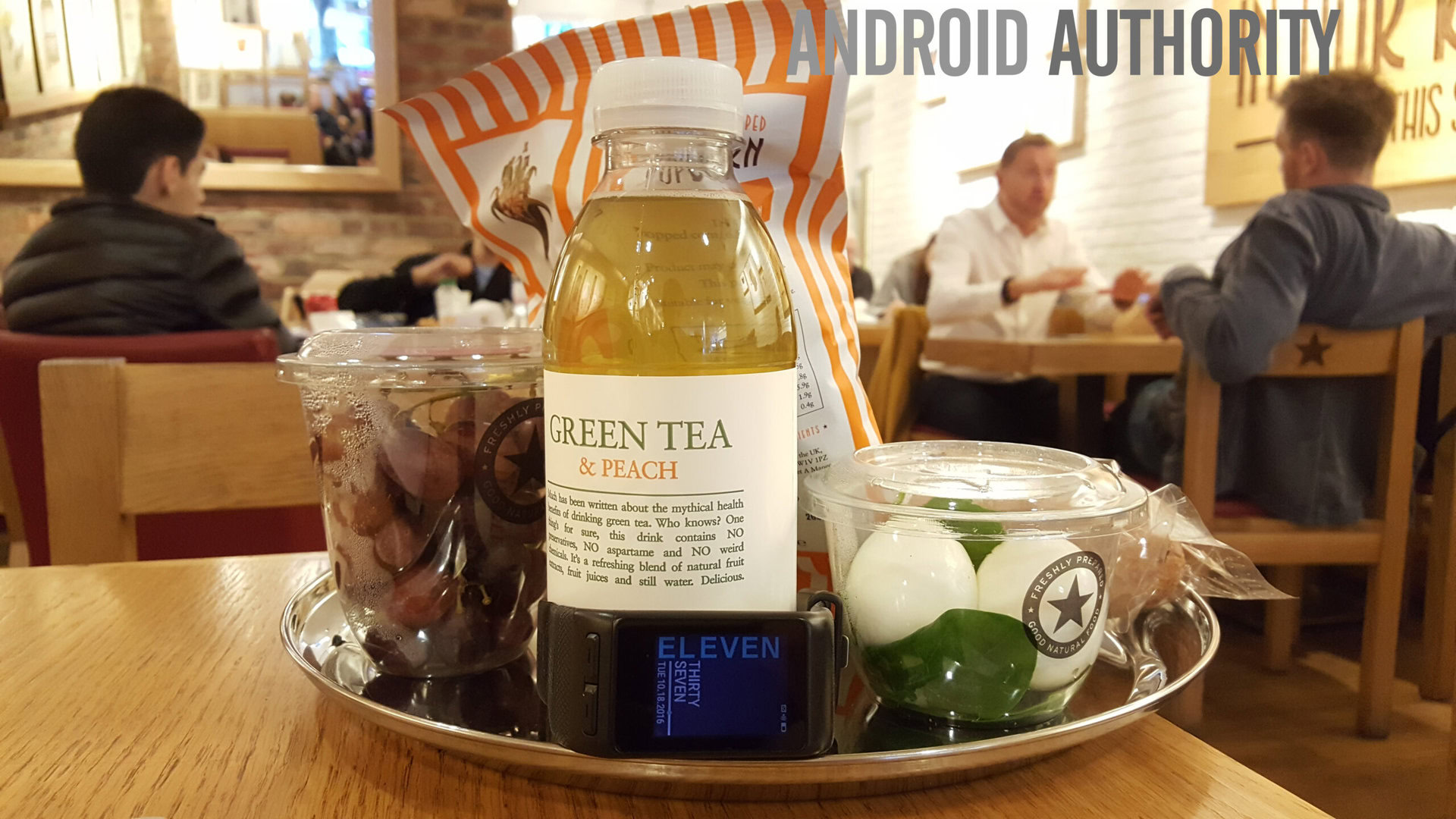
This baseline has its own name: the ‘BMR’ (Basal Metabolic Rate). This is how many calories you burn in a given day before you engage in any activity. Your body has to burn calories simply to allow you to breathe, to think and to blink (among other things). So even if you lie absolutely still for the entire day, you’ll still burn a certain number of calories and that number would be your BMR. Your AMR simply takes this number and accounts for your commute to work, your spring cleaning and your workouts etc. and combines them to present a total. The average female will end up with an AMR of 2,000, while men have an average of 2,500.
Fortunately, your fitness tracker will work all this out for you. Unfortunately, it’s once again an imperfect measurement. When you first get started with a fitness tracker, you will invariably need to use the app to input your age, your weight, your sex and your height. This is what your tracker uses to work out your BMR and it will then use the pedometer, heart rate monitor, gyroscope etc. in order to add your estimated active calorie burn on top of that and provide the AMR.
If you maintain a deficit of around 200-300 calories daily, then you should lose weight at a steady rate
The problem is that I have yet to come across a fitness app that asks for body fat percentage. This is an important omission because it means it is working out your BMR based on your weight relative to your height. What it’s not asking is how much of that weight is muscle versus fat, which is a notable omission as muscle is more ‘metabolically active’. That means that a muscular 170lb individual should have a higher BMR than an obese 170lbs. Without asking for your body fat percentage, there’s no way a fitness tracker will know which you are – and thus your BMR isn’t going to be 100% accurate.
But it’s the best we have for now, so just go with it.
At the end of each day, you’ll then be presented with your total AMR and as long as you get fewer calories every day from your food, your body will be forced to burn through fat reserves to provide energy for all that activity.
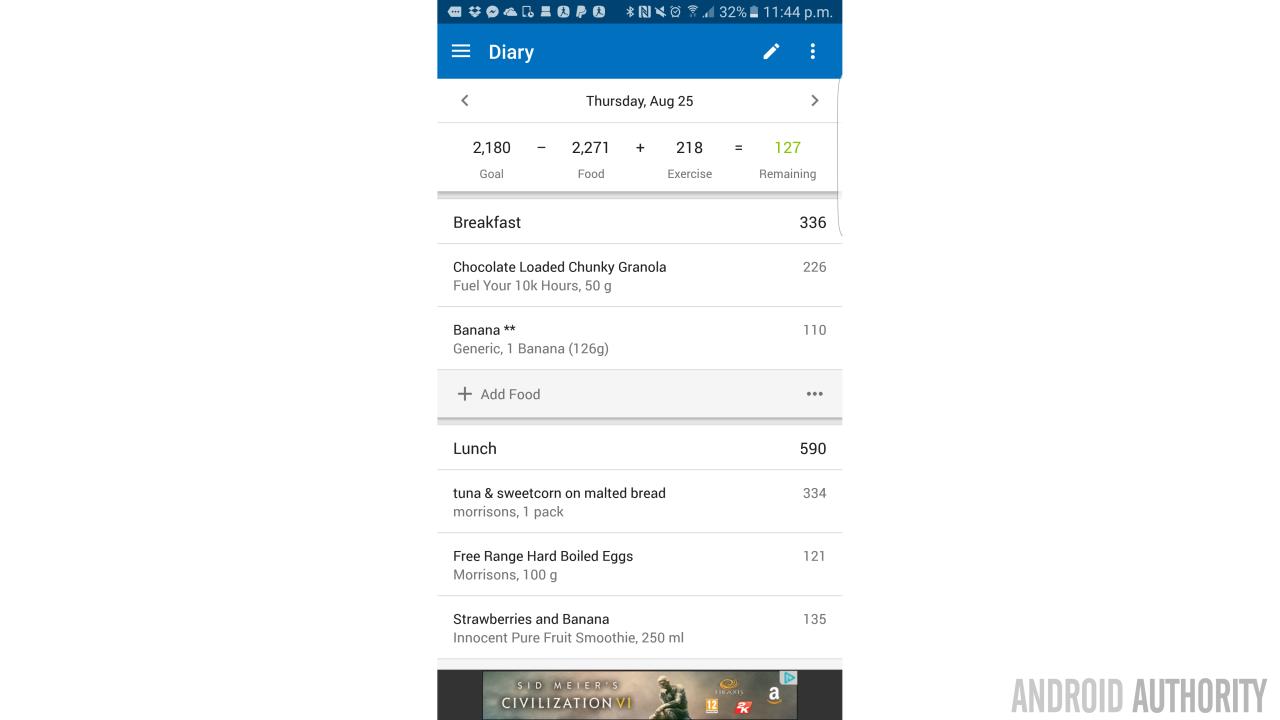
MyFitnessPal can be used to track the calories you consume and this should then sync with most good fitness trackers (check this!) allowing you to get an automatic calculation. At the end of each day, you’ll be able to see if you’re in a surplus, or a deficit. If you maintain a deficit of around 200-300 calories daily, then you should lose weight at a steady rate. Make sure to keep updating the app with your new weight though so the calculation stays accurate. Likewise, make sure that any long walks you go on get tracked too so that you won’t miss out on periods of higher calorie burn. This is where that activity auto-detection comes in handy…
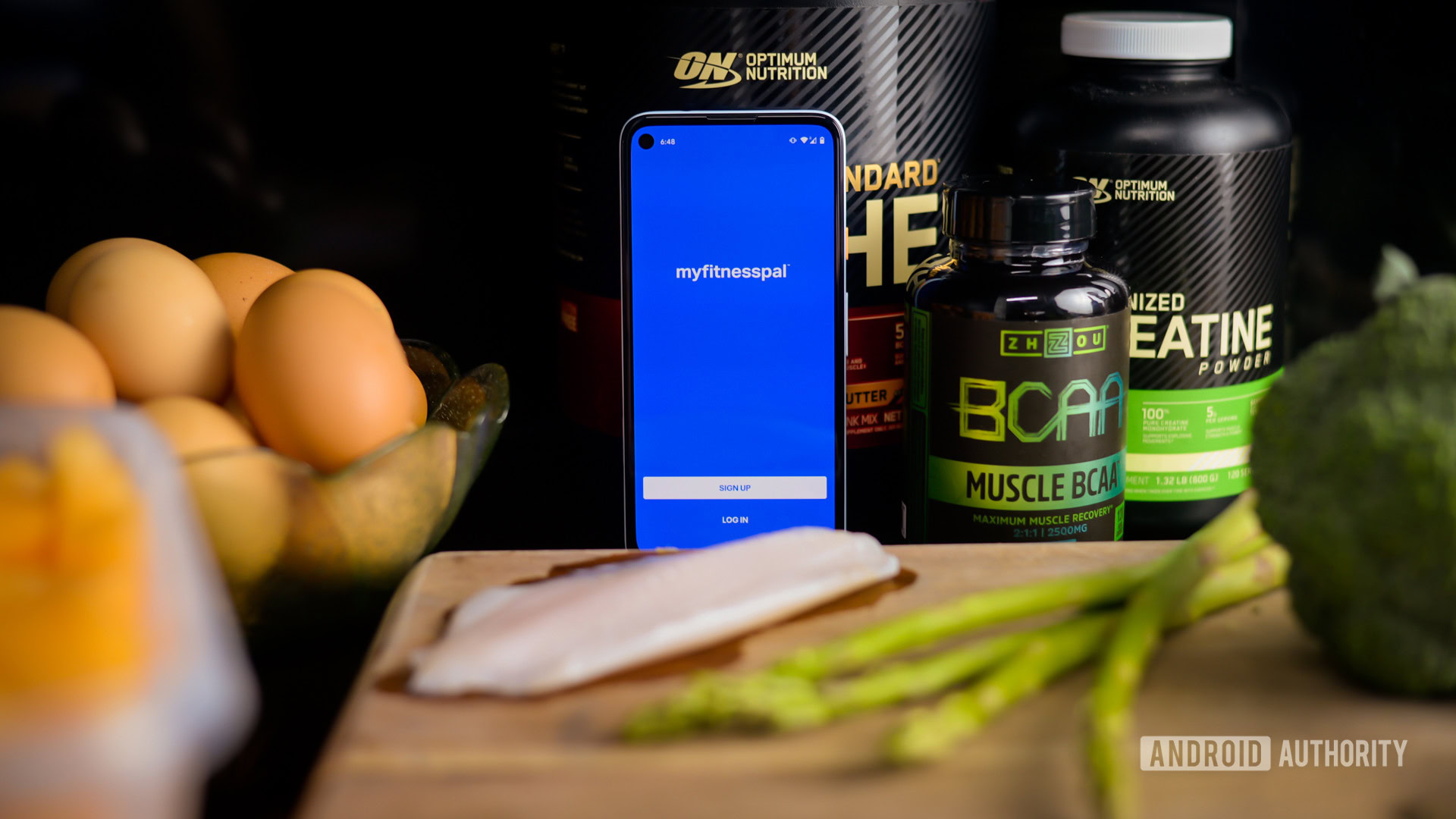
Why aren’t I losing weight?
Is it really that easy? Eat less than you burn and lose weight? For most people, yes it really is. While these numbers aren’t entirely accurate, they are close enough that on average, maintaining a deficit of 200 calories should still mean you’re coming in under budget. But in some cases, you might find that you don’t see the results you’re looking for and this is likely due to a number of factors influencing your BMR that no amount of fitness tracking is going to be able to pick up on its own. You may have a very slow metabolism, for example, and this could even point to a condition such as hypothyroidism.
This makes it very hard for people to burn calories and causes low energy as well as other symptoms such as acne and low mood. You might have another undiagnosed illness like celiac disease, diabetes, pre-diabetes or just poor insulin sensitivity. Some of these issues can only be treated by doctor.
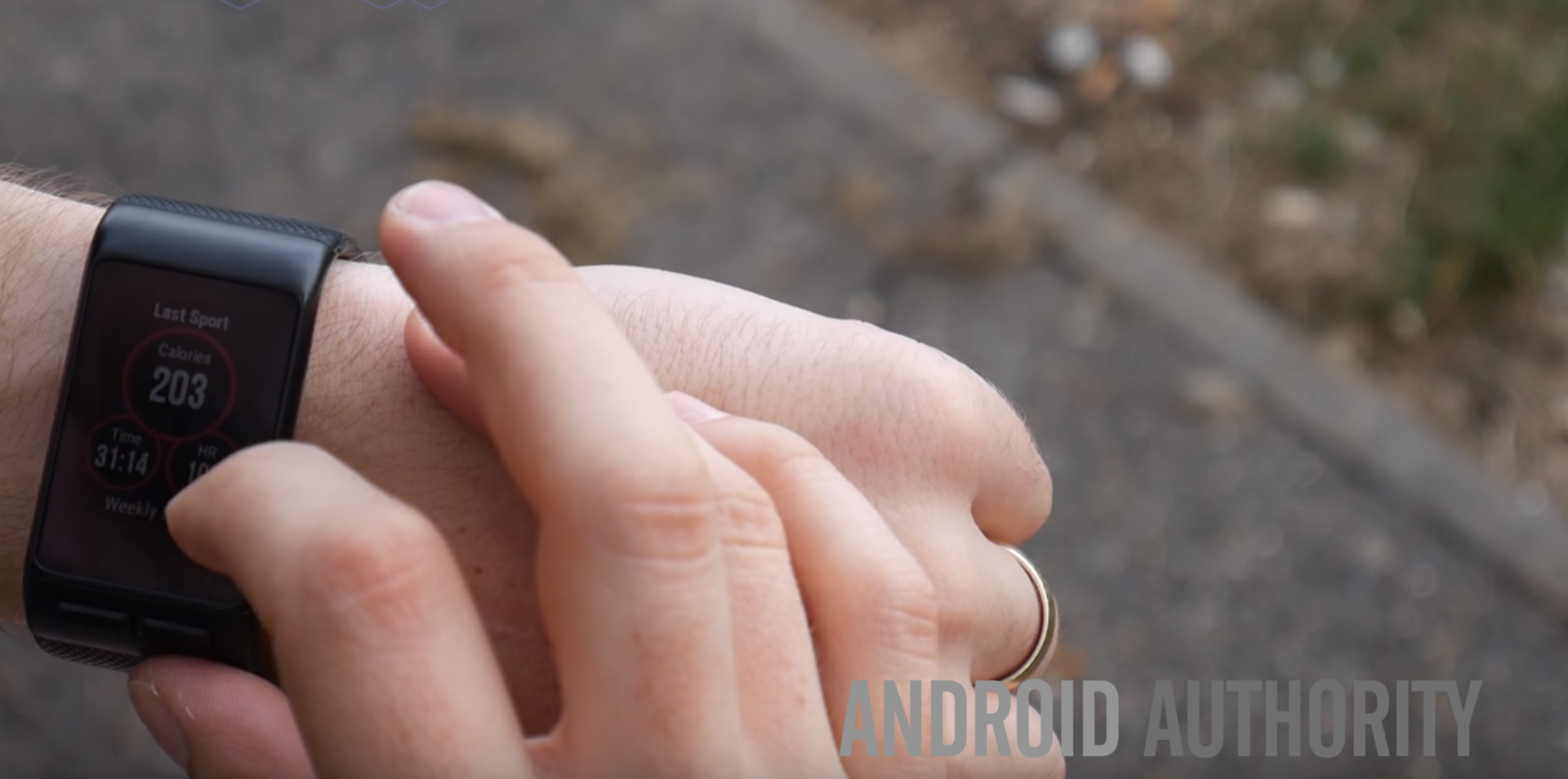
Others issues – like low insulin sensitivity or a generally slow metabolism – might be effectively managed with more complex diet changes. Switching to a low carb diet might be able to increase insulin sensitivity for example, whereas certain nutrients can support your metabolism in other ways. Whether or not these sorts of diets have merit is a matter of intense discussion and internet flame wars but either way, it is beyond the reach of most fitness trackers (though macro tracking is possible through MyFitnessPal to an extent…). Try lowering your calories to start with and if you don’t see the results you’re expecting, see your doctor and consider other diets.
What is important for everyone though is to eat a nutrient dense diet high in vitamins and minerals, which will support your weight loss and general health in a myriad of ways. It is possible to lose weight while eating an unhealthy diet but that is definitely not our goal here!
Some advice for easy calorie tracking
While there are numerous tools for tracking calories, MyFitnessPal is the preference for most people thanks to its huge database of foods, its handy barcode scanning functionality and its compatibility with a wide range of fitness apps.
If you’re still finding it too much like hard work to track all your calories though (and don’t forget to include drinks like coffee and soda!), then try doing it for a few days to get a rough idea of your calories in and out. It can also help to stick to a less varied diet for a while, which means all your regular foods will be easily accessible within the app. I try to eat a fairly consistent breakfast and lunch that only rack up about 1,200 calories and provide plenty of protein, then I cut loose at dinner…
How to build muscle with your fitness tracker
So that’s how you lose weight, what about bulking up?
Without going into too much detail here, the key ingredients to bulking up are:
- Creating muscle damage/metabolic stress through workouts
- Maintaining a caloric surplus
- Eating more protein
- Getting lots of rest
While your workouts are important, the real growth happens while you’re resting, as long as you’re providing your body with the raw materials it needs to repair and grow your muscle – amino acids found in protein. The classic advice is to consume 1 gram of protein for every 1lb of bodyweight (1, 2, 3) and MyFitnessPal will allow you to automatically see how much protein you’re getting from your food (again, you can do this for a few days and then stay consistent after that). If you struggle, a protein shake can be a useful aid in getting that protein conveniently.
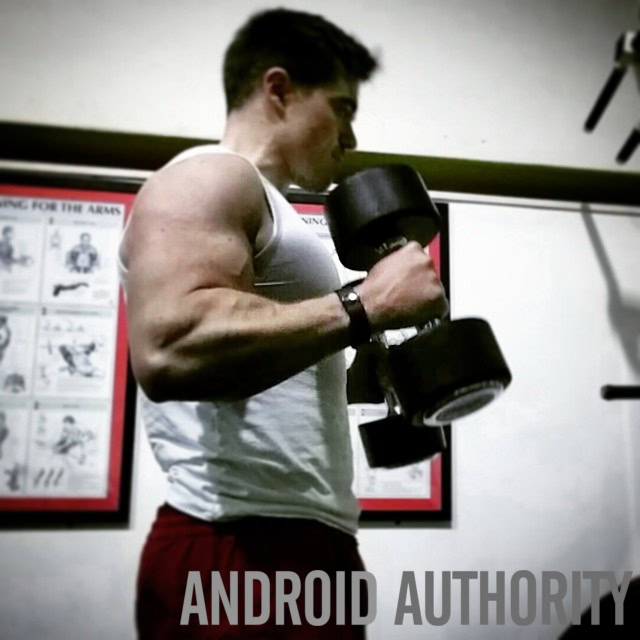
Maintaining a calorie surplus is also important because low blood sugar signals the release of ghrelin (the hunger hormone), followed by cortisol (the stress hormone), followed by myostatin (a molecule that breaks down muscle for energy). Stay in a calorie surplus and you’ll maintain a more ‘anabolic state’, resulting in more muscle mass.
Depending on your fitness tracker, two more tools might help you with this goal. One is the option to use guided workouts, such as those provided by the Microsoft Band 2. These can take the guess work out of muscle-building protocols and help you to provide the stimulus for growth without injuring yourself.
Another beneficial feature is sleep tracking. Remember: you build muscle when you rest and this is truest during sleep when you produce maximum testosterone and growth hormone. Monitor the amount of ‘restful sleep’ your fitness tracker is reporting and then try making changes to your ‘sleep hygiene’ to see if you can improve your numbers. The Jawbone UP3 is a pretty good sleep tracker but is sadly quite limited in numerous other crucial areas.
What I’m waiting for is a fitness tracker that can record heart rate variability – a key indicator that you have recovered from a workout and a figure that correlates with your testosterone/cortisol ratio. For now, this doesn’t exist but your resting heart rate can provide some information in this regard.
How to get fitter and track running, cycling and more
If you’re not partial to weightlifting, then perhaps running and cycling are more your style? This can be a fantastic addition to a weight loss program, or just a great way to improve your fitness and heart health. Thankfully, a fitness tracker will once again come in very handy here.
For starters, a fitness tracker with built-in GPS will allow you to go for a run and leave your phone at home. With your exact route and distance being tracked, you can now forget about running laps at your local park and instead go wherever the wind takes you, safe in the knowledge that your distance, times and more are all being recorded. The same goes for walks.
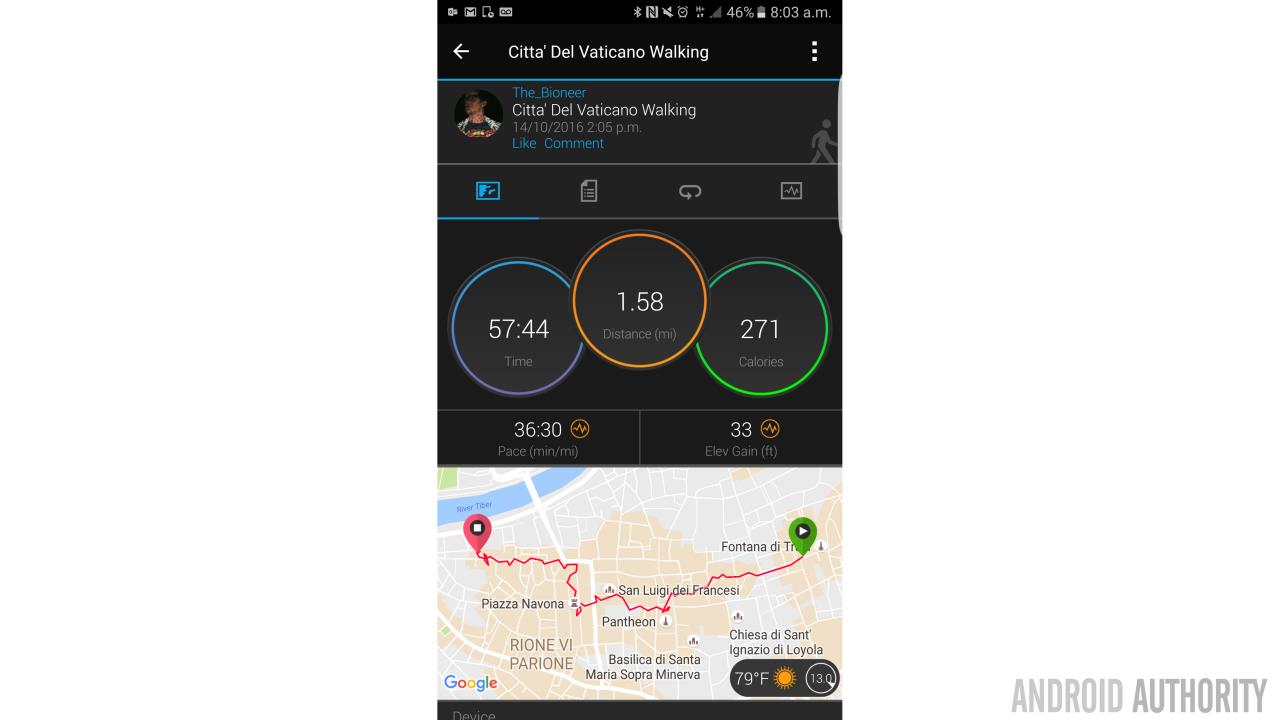
This then means that you can start to try and beat your personal bests, depending on what your goals are. If your aim is to lose weight, then you can simply ensure you are burning X number of calories on each run. If your aim is to improve your running speed, you might try and improve your splits – which tell you how long you took to finish each mile or kilometer. Without some form of tracker, this would be very tricky to measure accurately.
If you’re training for a marathon, your aim should be to increase your distance while keeping your average split as low as possible. A fitness tracker should provide you with your current ‘pace’ as you’re running (the estimated split time of your current mile, if you maintain that speed) and this will allow you to identify the best running speeds for meeting your goals.
This is where a barometer is very useful, as running on a gradient will of course affect your times and heart rate. Depending on your fitness tracker, you might also be able to get a lot of other detailed statistics too, such as your cadence, stride length, resting heart rate and even VO2 max (the amount of oxygen your body is capable of using and a key indicator of physical fitness). Some even offer details like maximum speed at anaerobic threshold (how fast you can run before switching to an anaerobic state), your lactate inflection point (the point at which you can no longer sustain maximum exertion). The same is useful for swimming, cycling, rowing etc. though you should check that your watch has profiles for the activities you most enjoy.
While these features are lacking in many devices, 3rd party apps will often be able to fill some of the gaps. And if not, you can always make your own! (I’m working on a meditation app for my Garmin vivoactive right now, for example.) Also: Flappy Bird. The best way to ensure you’re getting all of these more advanced metrics though is to buy a real running watch, like the Garmin Forerunner for instance.
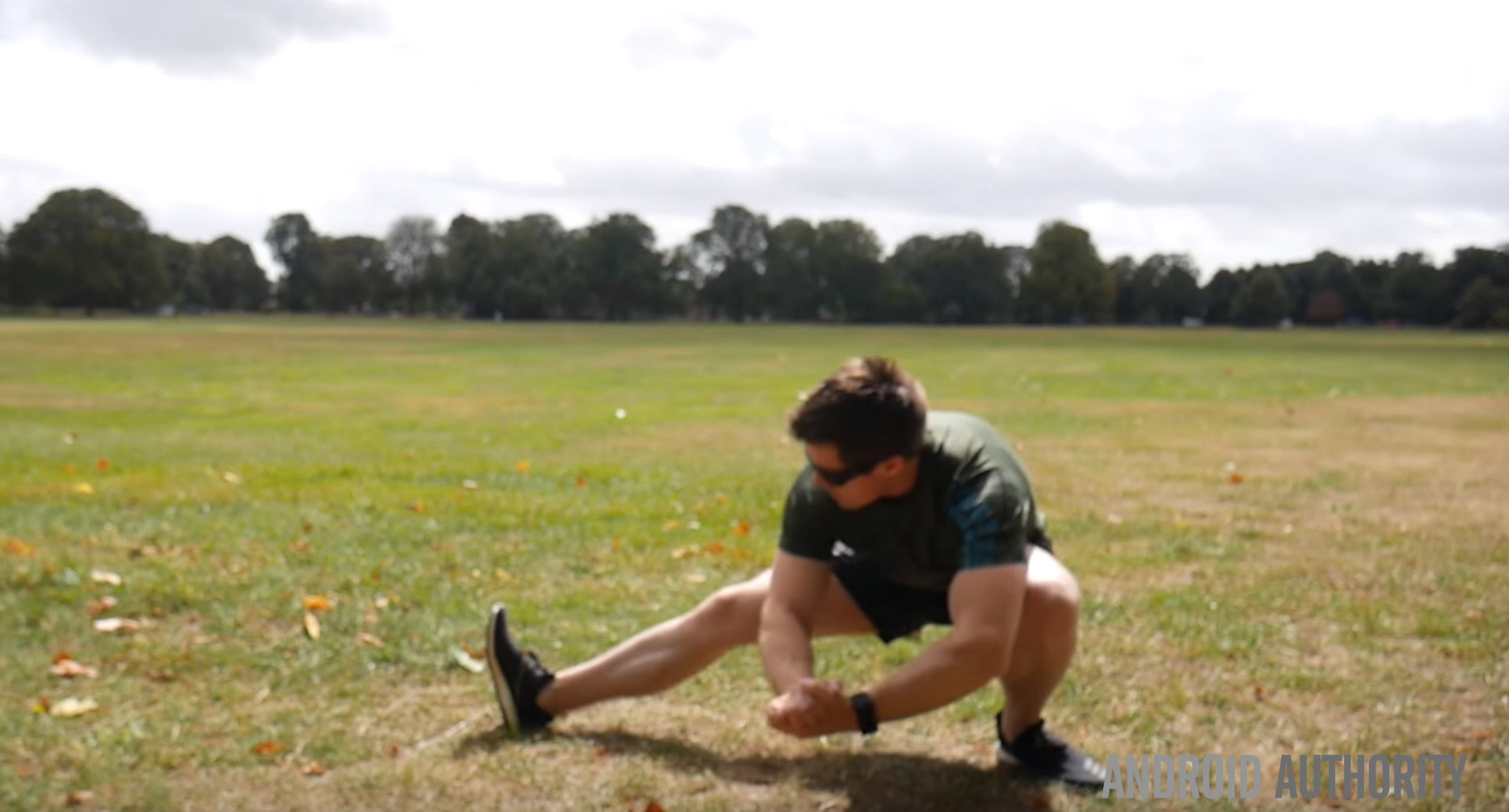
The mistake that a lot of people make when starting out with running or cycling is to try and go fast and burn tons of calories right away. This makes for an exhausting and painful experience that few people are going to want to keep repeating. Instead, go slow and just enjoy running to begin with. Make your first aim simply to ‘get better at running’. From there, the ability to monitor your performance will allow you to begin to spot areas for improvement that you can target – and this is when running can become incredibly addictive.
High intensity interval training
If you’ve been keeping up with your health news, you might have heard that ‘steady state cardio’ such as long-distance running is no longer in vogue. I tend to disagree, seeing as it has unique advantages such as the ability to lower resting heart rate through strengthening the heart’s left ventricle (which has numerous health benefits). However, there is no denying that the new(er) kid on the block – HIIT – is also a very useful tool for your training and is able to burn more calories in a shorter space of time while also improving mitochondrial function and VO2 max.
HIIT is ‘high intensity interval training’ and involves switching between intense bursts of activity and shorter periods of active recovery. An example might be to sprint for 30 seconds and then jog slowly for 2 minutes and repeat. Essentially, this means you’re switching between ‘anaerobic training’ which utilizes energy stores in your blood and muscles and ‘aerobic training’ which utilizes fat stores. By depleting the readily available energy stores, you actually increase subsequent fat loss throughout the day – a phenomenon often referred to as the ‘afterburn effect’.
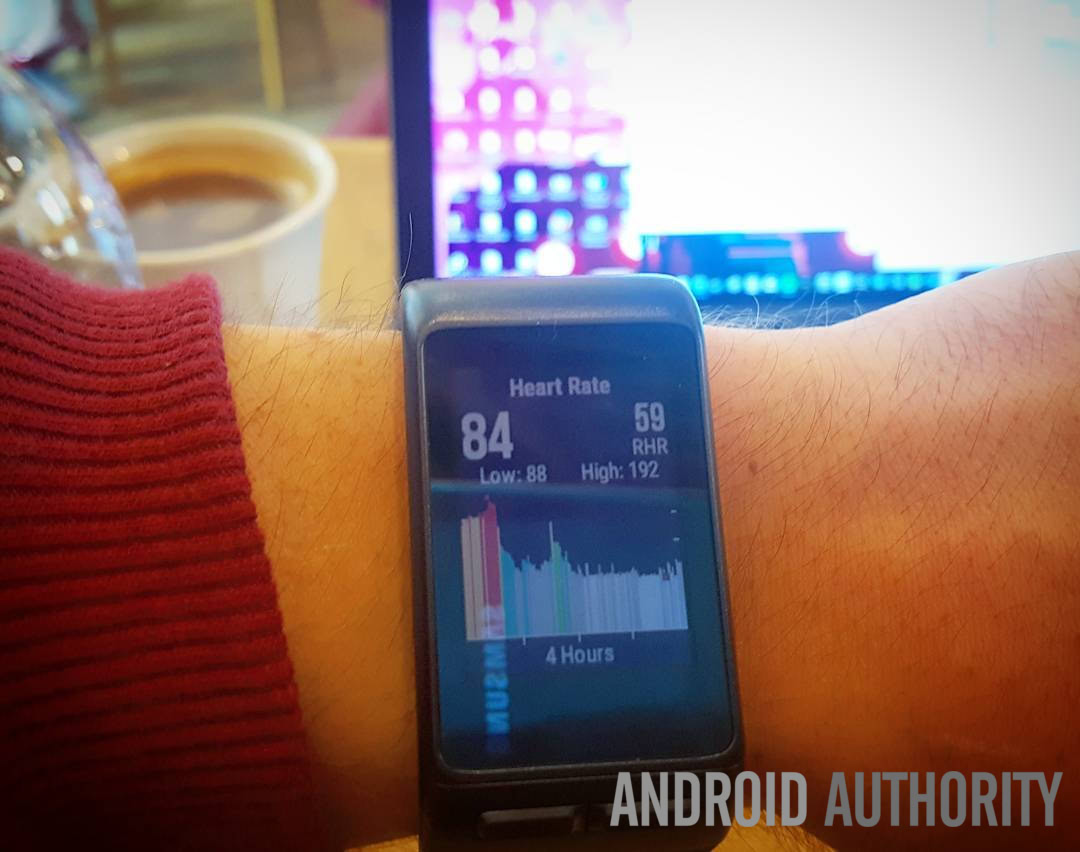
Some fitness trackers will again provide you guided workouts that will buzz to indicate when you should go full out and when you should lower your intensity. Otherwise though, you can achieve the same thing by simply observing your heart rate as you are training. During high intensity training, you need to aim for 90-100% of your MHR (max heart rate) which will be the highest number recorded by your tracker. During low intensity training, you should aim to stay in your ‘fat burning zone’ which is around 70% of your MHR. Zone training actually has numerous other advantages and can help to make your fitness tracker an active participant in your workouts, rather than just a passive recording tool.
Of course, training at such intensity puts rather a strain on your body and if you have any history of heart problems then this kind of training is not for you. Check with your GP if you’re concerned.
Improving general health + closing comments
Improving your sleep will help improve the way you feel and perform in just about every aspect of your life.
On top of all this, you can also use your fitness wearable simply to get better insights regarding your regular routine and look for areas that need improvement. I was very surprised to learn just how few steps I used to take on weekends, for instance, and so that was something I set about fixing. You may also be shocked at where the most calories come from in your regular diet, or how little sleep you’re getting.
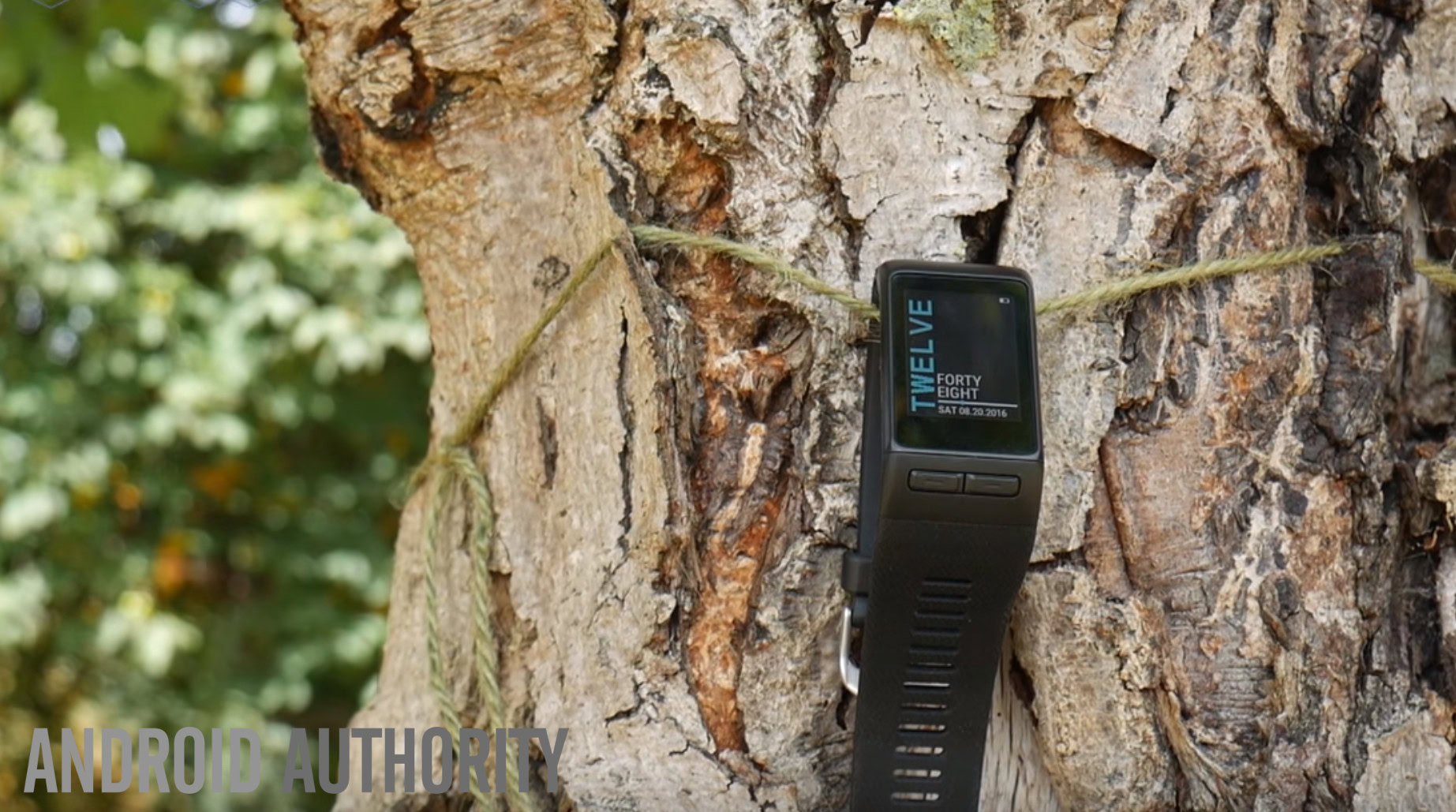
Monitoring your heart rate can be a lot of fun too, especially during big life events. It can be an indicator that you may be getting ill when it suddenly seems high, or you might find your resting heart rate isn’t quite as good as it could be. Improving your sleep will help improve the way you feel and perform in just about every aspect of your life, while ‘smart’ sleeping alarms (that wake you during lighter stages of sleep) can effectively reduce grogginess in the mornings (technically termed ‘sleep inertia’). Notifications reminding you to stand up and take breaks from your computer can also be eye-opening, while step goals help to keep you motivated and maybe encourage you to take the stairs rather than the lift.
In short then, fitness trackers really can be powerful tools improving your health and fitness, no matter what your goals are. If your device has been little more than a fancy pedometer until now, then I hope that this guide has inspired you to start taking more notice of it and putting all that data to good use. And I hope that in doing so, you’re able to structure your health goals and start seeing some real changes!
Next: